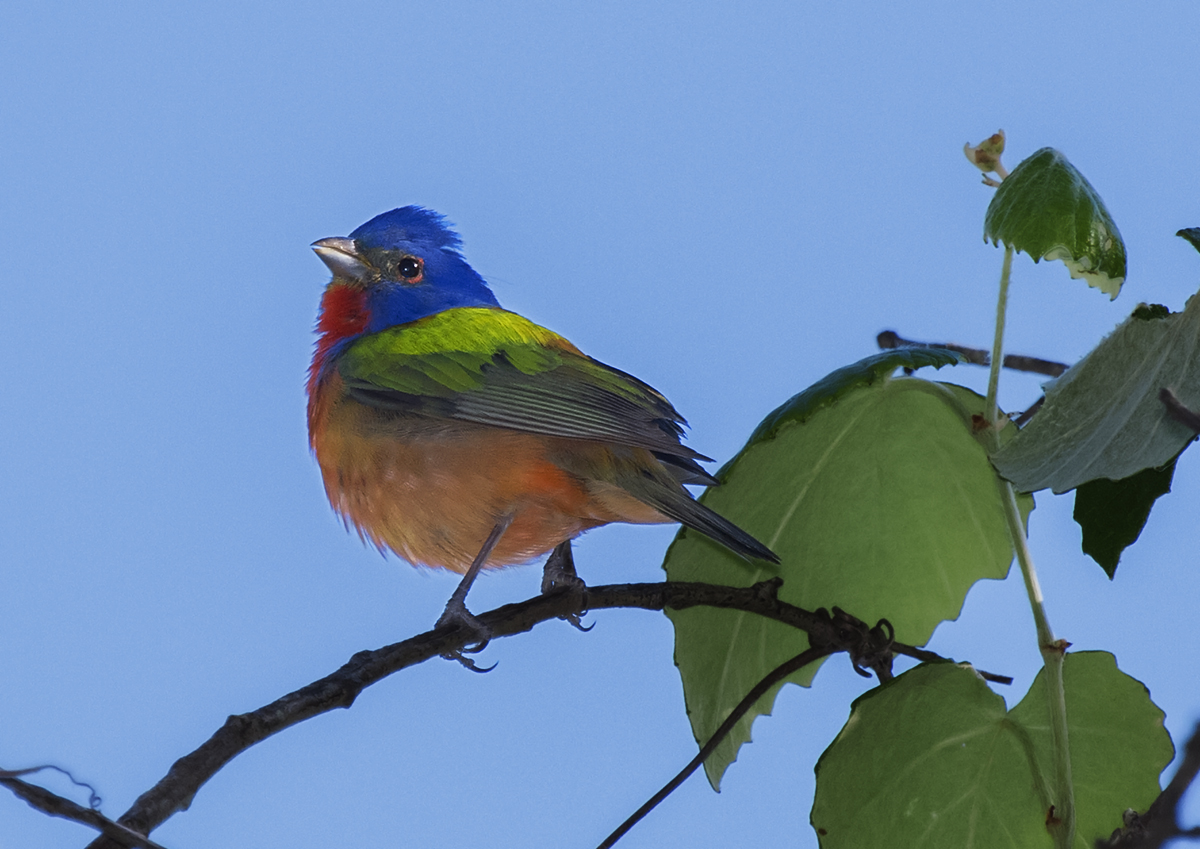For reference, here is the location on Google Maps. The main road on the left is CR-1174 with the entrance and parking lot at the upper end. Follow the trail signs for Rim Rock Trail and take the right (south) branch at the fork near the creek. The left branch takes you along the jeep trail visible in the satellite view below. The copse is circled in yellow.
Here is a shot of the early morning sun through the live oak trees. Most of the light green undercover is shin oak. The main trail passes through the center and provides a number of views through the shin oak.
 |
| Live oak and shin oak copse at Doeskin Ranch - iPhone 5 |
This time, I use the Speedlite 430EX II and a Better Beamer flash extender to provide some fill flash for the birds which were often back-lit up in the trees. I rigged a strap between my Camelback and my monopod to support everything without using a neck-strap.
 |
| Edward with camera support strap - iPhone 5 |
I practiced listening to the Painted Bunting song at home. The first bird I tracked down by the song was in a stand-alone tree between the main copse and the creek. When I finally found it visually, I was surprised because it was green like a female. I did not think that the females sing so I am assuming that this is an immature male. Is it just practicing its song for next year?
Update 2014-05-04 - Danielle posted a question about this on the Birds of Texas Facebook group. In reply, member Jim Peterson commented: "Female buntings, and some grosbeaks are known to sing occasionally. This one looks like a first year male, though." Florence Haupt King also replied: "The females are green-backed and cream on the breast and abdomen. The 1st year males begin to show traces of the other colors. If you look close, you can see those in this photo." Thank you to both for the assistance.
Danielle found this article at Cornell Lab of Ornithology, Neotropical Birds which goes into detail on the complexities of their plumage cycles. It states that Alternate-I males sometimes breed but only hold lower quality territories. A good introduction to plumage cycles can be found at the Cornell Lab of Ornithology, All About Birds site.
 |
| Immature Male Painted Bunting Canon EF 100-400mm f/4.5-5.6L - ISO-800, 400mm, f/6.3, 1/1250s, EC +1.3, FEC -2-1/3 |
I did finally get some photographs of the mature males. This first shot would not have been possible without the fill-flash. Both are heavily cropped as the birds were still at some distance. I was interested to see that the red in the breast and belly were not as deeply saturated as other images I have seen.
 |
| Adult Male Painted Bunting Canon EF 100-400mm f/4.5-5.6L - ISO-800, 400mm, f/6.3, 1/500s, EC +1.3, FEC -2-1/3 |
 |
| Adult Male Painted Bunting Canon EF 100-400mm f/4.5-5.6L - ISO-800, 400mm, f/6.3, 1/500s, EC +0.3 |

No comments:
Post a Comment
Relevant comments and questions are welcome but submissions with spam-links will not be published.